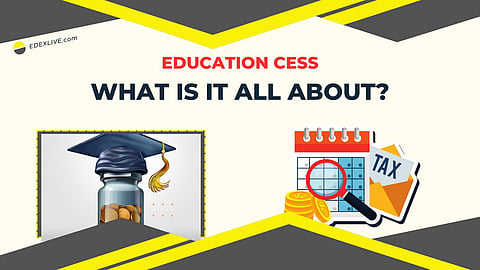

Every time we go out to eat or make a purchase, we come across a term called education cess. So, what is it exactly?
Education cess is an additional financial levy that is applied on the basic tax liability by the Government of India to generate additional revenue to fund primary, secondary and higher education. First introduced in 2004 as a temporary measure, it has been extended several times since then.
The current rate of education cess is 2% of the payable tax. This means that for every ₹100 of tax that you pay, ₹2 will go towards the education cess. The cess is collected by the Income Tax Department.
The money collected from the education cess is used to fund a variety of educational initiatives, including:
- Building new schools and colleges
- Providing scholarships to students from disadvantaged backgrounds
- Improving the quality of education
The government has said that the education cess has helped to improve the quality of education in India. However, there have also been concerns about the use of the money collected from the cess. Some people have argued that the money is not being used effectively and that it is not reaching the intended beneficiaries.
However, there is no doubt that the cess has helped to raise awareness about the importance of education in India. It has also helped to provide additional funding for educational initiatives, which has benefited millions of students.
